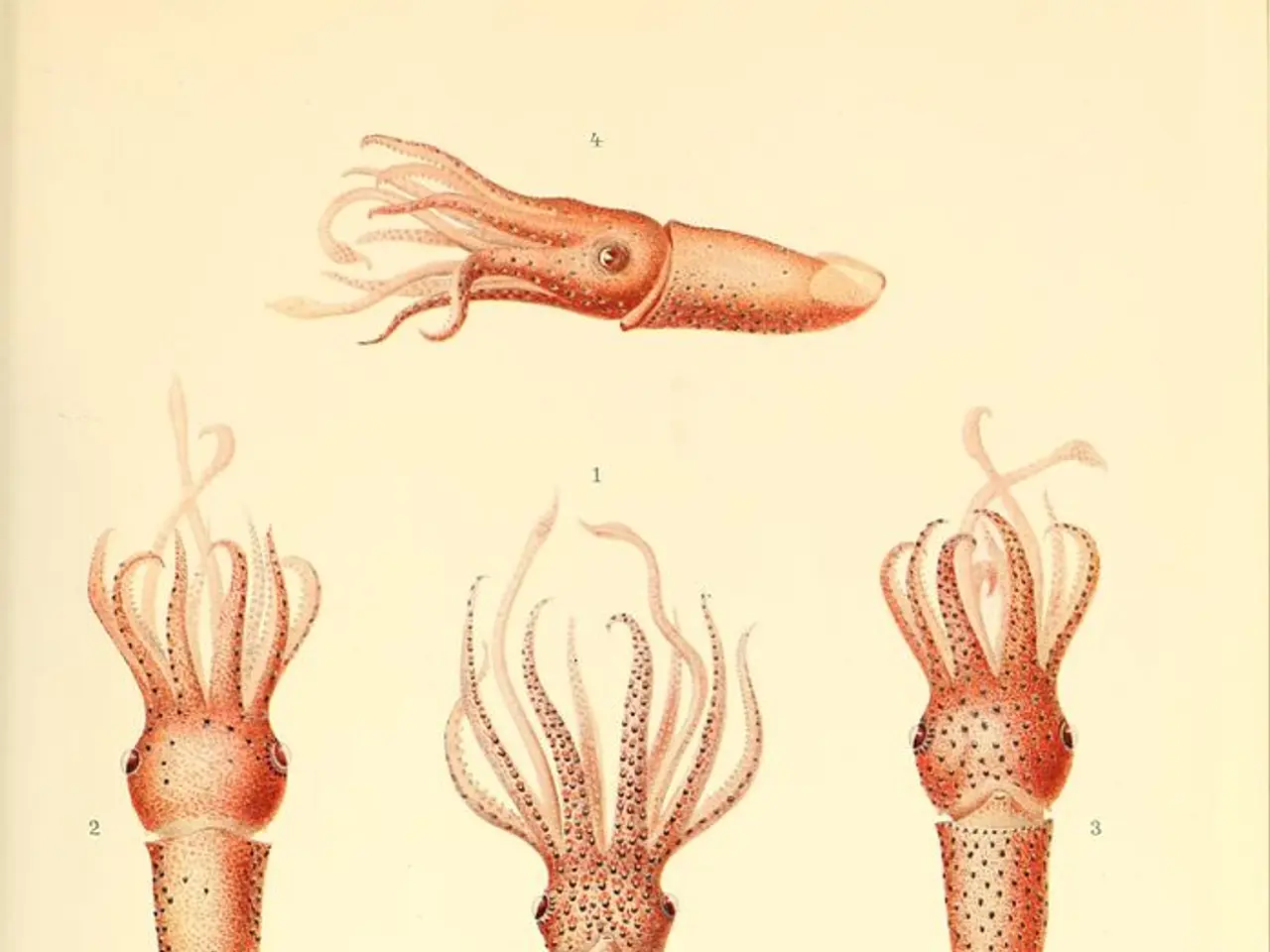Octopus with the Most Dramatic Sexual Differences in the Animal Realm is the Blanket Octopus
In the vast and diverse ocean, the blanket octopus (Tremoctopus spp.) stands out as an extraordinary example of sexual dimorphism. This intriguing creature holds the record for the most extreme sexual size difference by length in the animal kingdom, according to the London Natural History Museum.
The female blanket octopus can grow up to an impressive 1.8 meters (6 feet) in length, while the male counterpart is a modest 2.5 centimeters (1 inch)—a staggering 1:72 male to female size ratio. This remarkable disparity makes the blanket octopus the species with the most extreme sexual dimorphism in terms of length currently known.
While other deep-sea dwellers, such as the anglerfish, exhibit massive differences in weight between the sexes, the blanket octopus takes the lead in length ratio. The male blanket octopus, smaller than a peanut, clings to the much larger female, creating a visual contrast that is the most pronounced for any living animal today.
One of the most striking features of the female blanket octopus is her iridescent rainbow skirt, a webbing between her first and second arm. This trailing appendage is believed to serve as a deterrent to predators, making the female appear larger and more threatening.
The male blanket octopus, despite his diminutive size, is not completely defenceless. He has evolved immunity to the sting of the Portuguese Man o' War, a notorious marine creature often mistaken for a jellyfish. In some cases, the male blanket octopus has been observed sneaking into the tentacle mass of the Portuguese Man o' War and nabbing a few tendrils to use as whips to deter predators.
The ocean is teeming with examples of sexual dimorphism, a phenomenon where the male and female sexes of a species can vary in size, shape, and morphology. The blanket octopus is a shining example of this, with its male-to-female length ratio of 1:72.
It's important to note that the Portuguese Man o' War is not a single organism but a siphonophore made up of millions of identical clones called zooids, each fulfilling a different role, such as enabling the creature to swim and forming its long tentacles.
The Krøyer's deep-sea angler fish (Ceratias holboelli) holds the Guinness World Record for size difference between a male and a female, with the female being 500,000 times heavier than a mature male. However, when it comes to length ratio, the blanket octopus remains the undisputed champion.
In conclusion, the blanket octopus, with its striking appearance and extreme sexual dimorphism, is a truly remarkable sea creature to behold. Its ability to adapt and survive in the ocean's depths, even in the presence of dangerous predators like the Portuguese Man o' War, makes it a fascinating subject for study and observation.
The study of the blanket octopus, with its remarkable sexual dimorphism, can be a valuable contribution to environmental-science and health-and-wellness, providing insights into adaptation and survival strategies in challenging environments. The male's ability to avoid the sting of the Portuguese Man o' War could lead to potential discoveries in sports medicine and mixed-martial-arts, as it showcases an unusual immunity and defensive mechanism. Furthermore, the ocean's diverse species, such as the blanket octopus, enrich our understanding of science, offering a captivating narrative in the realm of sports, health, and wellness.




